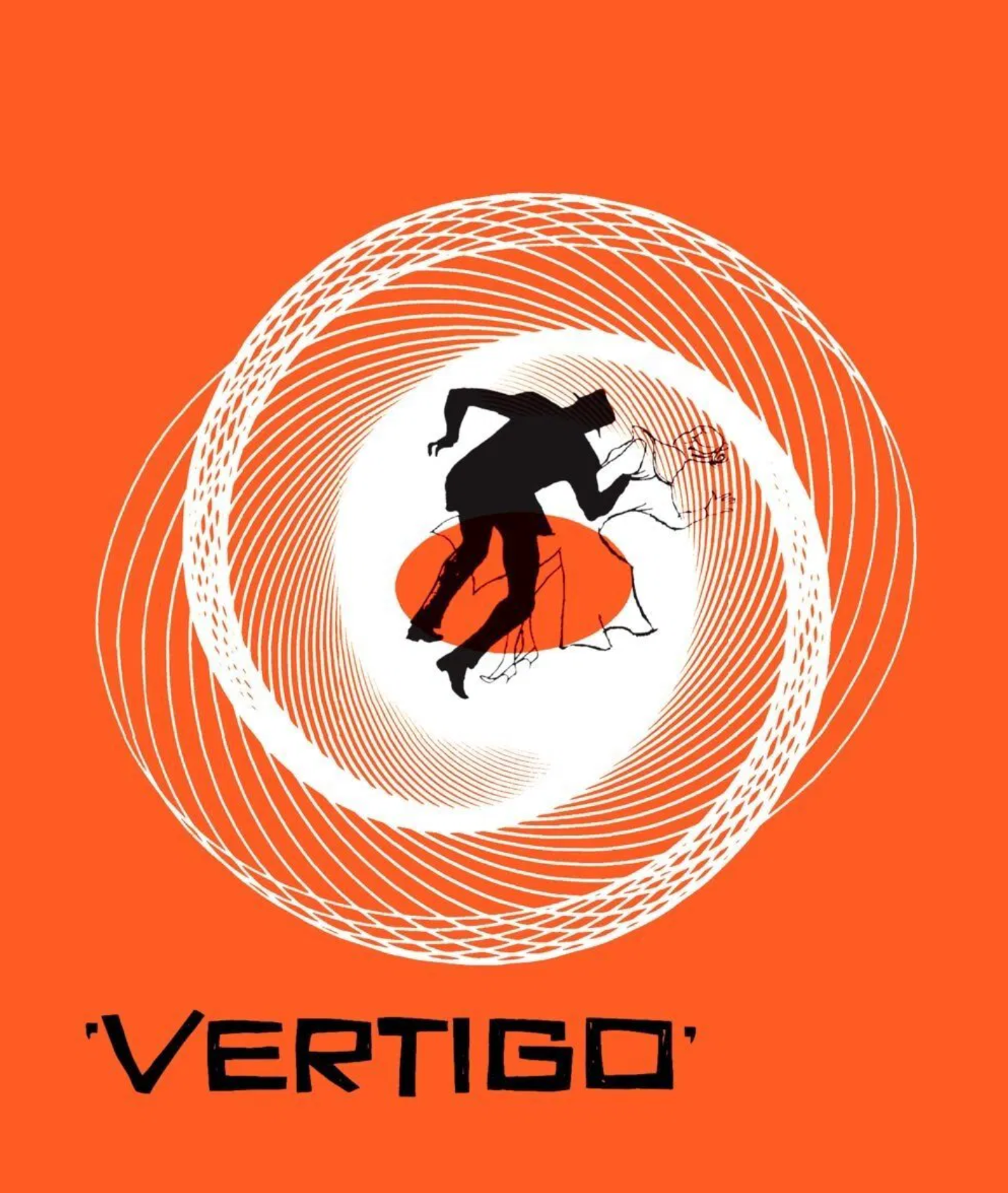Vertigo (1958): Hitchcock’s Masterpiece of Obsession and Illusion.
Alfred Hitchcock’s Vertigo (1958) is a psychological thriller about ex-detective Scottie Ferguson (James Stewart), who develops a dangerous obsession with a mysterious woman, Madeleine (Kim Novak). Blurring illusion and reality, the film explores love, death, and identity through groundbreaking camerawork, Bernard Herrmann’s haunting score, and Hitchcock’s masterful direction. Widely hailed as one of the greatest films of all time.

Vertigo (1958): Hitchcock’s Masterpiece of Obsession and Illusion

Vertigo
1958 / 128m
General Information
Vertigo is a 128-minute color film directed by Alfred Hitchcock and released in 1958 by Paramount Pictures. The screenplay, written by Alec Coppel and Samuel A. Taylor, was based on the novel From Among the Dead by Pierre Boileau and Thomas Narcejec.
The leading roles are played by James Stewart, Kim Novak, Barbara Bel Geddes, and Tom Helmore. The film received two Academy Award nominations (for Art Direction and Sound) and is frequently ranked among the top five greatest films of all time.
The Film’s Core Themes
At its heart, Vertigo is a film about obsession, illusion, and the fragile boundary between reality and fantasy. It’s a story of love haunted by death, and of the destructive power of trying to control or recreate another person.
Hitchcock himself once described the story as an analogy for sexual desire: Scottie’s (James Stewart) desperate attempt to “bring Madeleine back to life” is portrayed cinematically as an undressing rather than a dressing.
Structure of the Film
The narrative unfolds in three distinct parts:
-
The Setup – Scottie, a former detective suffering from vertigo after a rooftop accident, is hired by his old acquaintance Gavin Elster to follow his wife, Madeleine. Scottie becomes entranced and falls in love with her, only to witness her apparent suicide.
-
The Illusion – Grief-stricken, Scottie retreats into a dreamlike existence until he meets Judy, a woman who bears an uncanny resemblance to Madeleine. Consumed by obsession, he attempts to transform Judy into the woman he lost.
-
The Revelation – In a bold twist (revealed earlier in the film than in the original novel), Hitchcock shows us that Judy and Madeleine are the same person. Scottie’s obsession culminates in tragic clarity as he forces Judy to confront the truth at the bell tower.
Character Analysis
Scottie Ferguson (James Stewart)
A man defined by fear and failure, Scottie is both vulnerable and controlling. His vertigo not only paralyzes him physically but symbolizes his psychological spiral into obsession. Stewart plays him as a sympathetic yet unsettling figure—an ordinary man consumed by an impossible ideal.
Madeleine / Judy (Kim Novak)
Madeleine represents the unreachable fantasy—elegant, mysterious, and tragic—while Judy embodies the imperfect, all-too-human reality. Novak brilliantly contrasts the two personas: one ethereal, the other raw and flawed. Her dual performance is central to the film’s enduring power.
Midge (Barbara Bel Geddes)
Grounded, rational, and deeply caring, Midge serves as the film’s counterpoint to Madeleine. Once Scottie’s fiancée, she symbolizes the safe, attainable love he rejects. Her presence highlights Scottie’s descent into dangerous obsession.
Cinematic Innovations
Camera Work
Cinematographer Irmin Roberts introduced the now-iconic “dolly zoom” (or contra-zoom) to simulate vertigo. This effect, achieved by zooming out while tracking the camera forward, creates a disorienting sense of falling—one of cinema’s most famous visual techniques.
Lighting & Atmosphere
Hitchcock used natural light where possible but relied on soft-focus filters and expressive color to heighten emotion. The eerie green glow bathing Judy in one pivotal scene symbolizes Scottie’s hallucinatory vision of Madeleine’s “return.”
Editing
As always with Hitchcock, editing is precise and purposeful. Cuts are timed to sustain suspense, with dream sequences blending animation, music, and abstract imagery to externalize Scottie’s fractured psyche.
Music
Bernard Herrmann’s score is essential to the film’s mood. The famous “Scene d’Amour” theme swells with passion and melancholy, perfectly capturing the tension between romance and obsession. Herrmann’s music contrasts with diegetic classical pieces (like Mozart) that symbolize the mundane, grounding presence of Midge.
Costumes
Costumes reveal character duality. Madeleine’s wardrobe is elegant, refined, and dominated by her memorable gray suit, embodying an ideal of Hitchcockian femininity. Judy’s clothing, in contrast, is simple and cheap—until Scottie remakes her in Madeleine’s image. The transformation scene underlines Hitchcock’s obsession with appearances and identity.
Set Design
Though rooted in real San Francisco locations, much of Vertigo was carefully constructed. The mission’s bell tower was created with matte paintings and specially built sets. These artificial spaces reflect the artificiality of Scottie’s obsession itself.
Why Vertigo Endures
More than six decades after its release, Vertigo remains one of Hitchcock’s most haunting and psychologically complex films. Its exploration of obsession, loss, and the human tendency to chase illusions rather than embrace reality ensures its place as a timeless masterpiece.